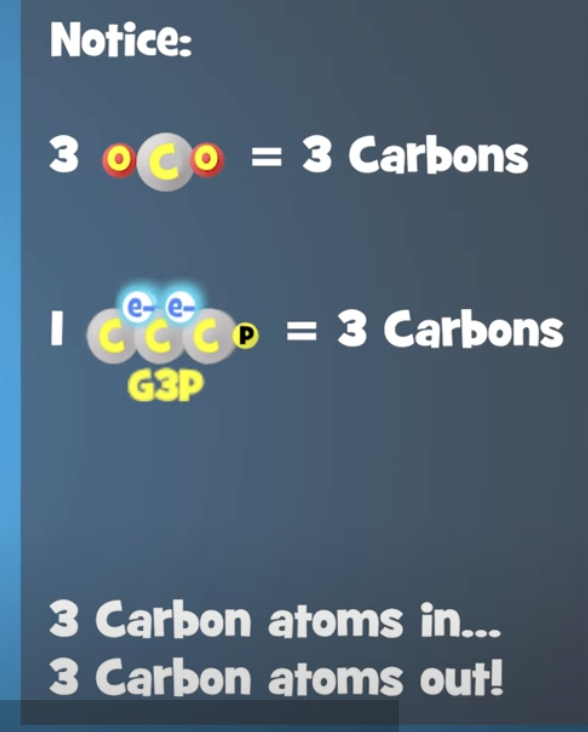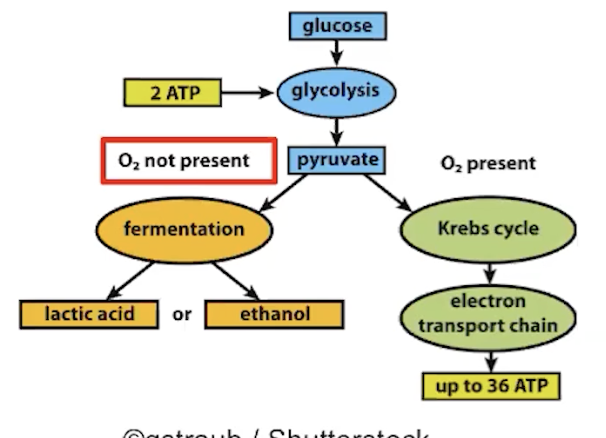includes: photosynthesis
What is the primary purpose of the light-dependent reactions?
To convert light energy into chemical energy (ATP and NADPH) for use in the Calvin Cycle.
What are the reactants of the light-dependent reactions?
Light, water (H₂O), NADP⁺, ADP + Pi
What are the products of the light-dependent reactions?
Oxygen (O₂), ATP, NADPH
What is the role of Photosystem II (PSII)?
Captures light energy to excite electrons, splits water (photolysis) to replace lost electrons, releases O₂ as a byproduct.
What is photolysis, and where does it occur?
he splitting of water (H₂O → 2H⁺ + ½ O₂ + 2e⁻) in Photosystem II.
What happens to electrons after they leave Photosystem II?
They travel down the electron transport chain (ETC), which pumps H⁺ into the thylakoid lumen, creating a proton gradient.
What is the role of Photosystem I (PSI)?
Captures more light energy to re-excite electrons and pass them to NADP⁺, forming NADPH.
How is ATP produced in the light-dependent reactions?
ATP synthase uses the proton gradient (H⁺) to convert ADP + Pi into ATP (chemiosmosis).
What is the purpose of the Calvin Cycle?
To use ATP and NADPH to convert CO₂ into glucose (C₆H₁₂O₆).
What are the three phases of the Calvin Cycle?
Carbon fixation, Reduction, and Regeneration of RuBP
What enzyme is responsible for fixing CO₂?
RuBisCO
What happens in the carbon fixation phase?
RuBisCO attaches CO₂ to RuBP forming 3-PGA
What happens in the reduction phase?
ATP and NADPH are used to convert 3-PGA into G3P
What happens in the regeneration phase?
Some G3P molecules leave to form glucose, while the rest are converted back into RuBP using ATP, allowing the cycle to continue.
How many CO₂ molecules are needed to make one glucose molecule?
6 CO₂ molecules (since it takes two G3P molecules to form one glucose).
What are the reactants of the Calvin Cycle?
CO₂, ATP, NADPH
What are the products of the Calvin Cycle?
G3P (used to form glucose), ADP + Pi, NADP⁺
What is the overall balanced equation for photosynthesis?
6CO2+6H2O+light→C6H12O6+6O2
Where does each stage of photosynthesis occur?
Light-dependent reactions → Thylakoid membrane
Calvin Cycle → Stroma
What energy molecules link the two stages of photosynthesis?
ATP & NADPH (produced in light-dependent reactions, used in Calvin Cycle).
What is photorespiration, and why is it inefficient?
When RuBisCO fixes O₂ instead of CO₂, wasting energy and reducing glucose production.
What are the alternative pathways plants use to avoid photorespiration?
C4 Photosynthesis and CAM Photosynthesis.
How do C4 plants (e.g., corn, sugarcane) avoid photorespiration?
They use PEP carboxylase to fix CO₂ into a 4-carbon compound in mesophyll cells, then release CO₂ in bundle sheath cells for the Calvin Cycle.
How do CAM plants (e.g., cacti) reduce water loss?
They open stomata at night to fix CO₂ and store it as organic acids, then use it during the day.
describe what happens in the light reaction
(in the thylakoid membrane)
a photon excites an electron in photosystem II, and this excited electron is passed dwn the electron transport chain. Water is split by an enzyme in PSII, releasing: electrons to replace the excited electron lost from PSII, O2, H+ ions that accumulate inside the thylakoid lumen
as the excited electron moves down the ETC, additional H+ ions are pumped into the thylakoid lumen, increasing the proton gradient
once it reaches photosystem I, it gets re-excited by another photon
moves down a second ETC, reduces NADP+ to NADPH
the proton gradient inside the lumen is now very high —> protons passively diffuse back into the stroma through ATP synthase
the flow of protons (chemiosmosis) drives ATP synthase, converts ADP + Pi —> ATP
describe what happens in the calvin cycle
Carbon fixation
the enzyme rubisco attaches CO2 to RuBP
forms an unstable 6 carbon intermediate, which immediately breaks into two molecules of 3-PGA
Reduction
each 3-PGA molecule is phosphorylated by ATP, converting ATP —> ADP + Pi
then, NADPH donates electrons to reduce 3-PGA into G3P
at this point, some G3P molecules exit the cycle to be used in glucose synthesis
Regeneration
remaining G3P molecules are used to regenerate RuBP, which requires ATP
ensures the Calvin Cycle can continue accepting more CO2
for every 3 CO2 brought into the calvin cycle, there’s a net gain of
one G3P

How many CO₂ molecules enter the Calvin Cycle per turn?
3
how many g3p are formed and how many exit
1 G3P exits the cycle to be used in glucose synthesis.
The remaining 5 G3Ps (3-carbons each, total = 15 carbons) get rearranged to regenerate 3 RuBP molecules (5-carbons each, total = 15 carbons).
This regeneration step requires 3 ATP.
How much ATP is needed to regenerate RuBP?
3 ATP needed for RuBP regeneration
How much ATP and NADPH are used in the reduction phase?
6 ATP + 6 NADPH used in reduction
What are the total inputs needed to form one glucose molecule?
6 CO₂, 18 ATP, 12 NADPH per glucose
fermentation
metabolic process where cells convert sugars (like glucose) into energy in the absence of oxygen. It produces lactic acid or ethanol and carbon dioxide (depending on the type of fermentation).
Alcoholic fermentation (yeast): Glucose → Ethanol + CO₂ + energy
Lactic acid fermentation (muscle cells): Glucose → Lactic acid + energy

cellular respiration
sequence of enzyme-catalyzed reactions that capture energy from biological macromolecules
steps:
glycolysis (in the cytoplasm)
pyruvate oxidation (in mitochondria)
krebs cycle/citric acid cycle (in mitochondria)
ETC (in mitochondria)